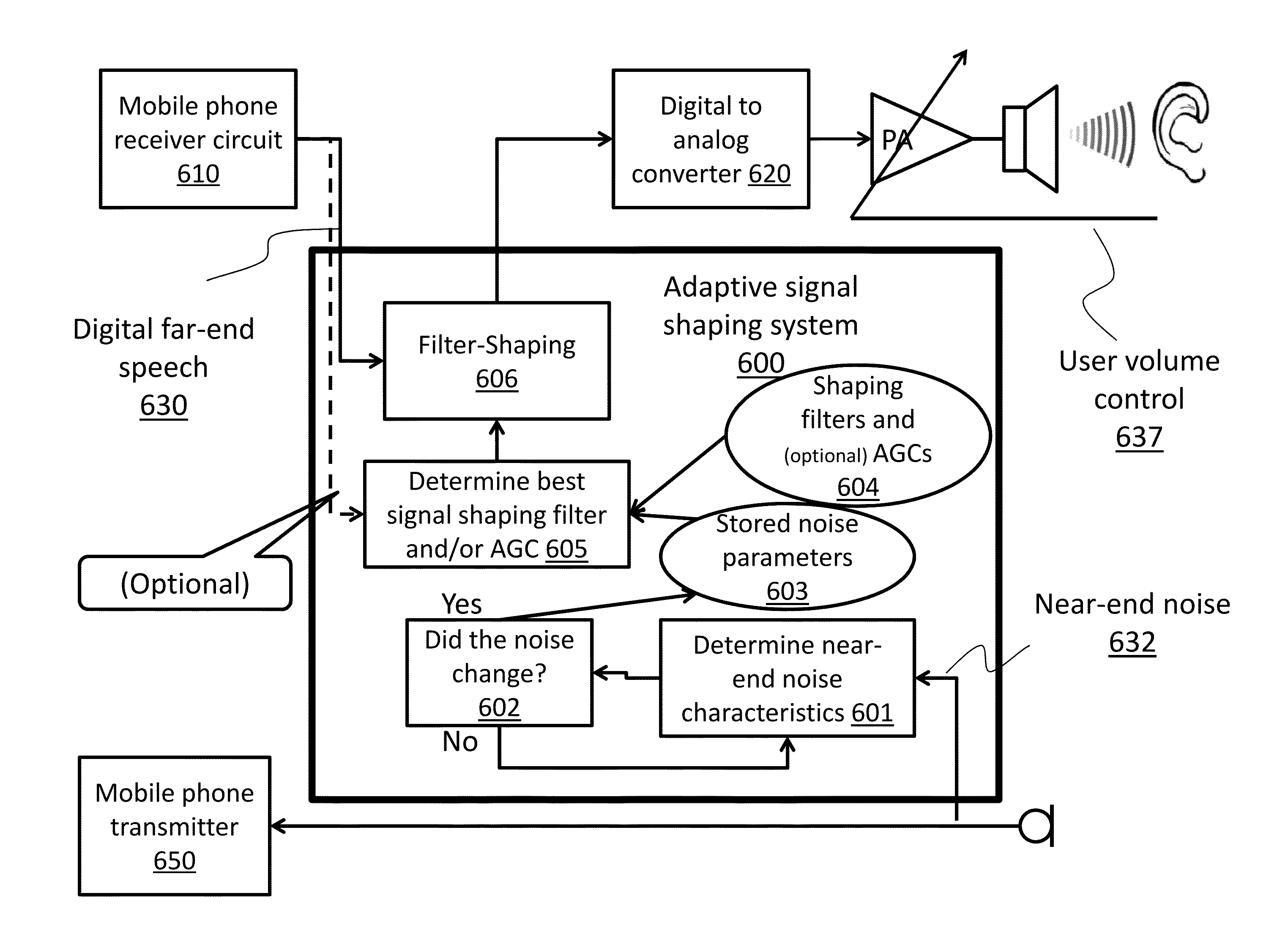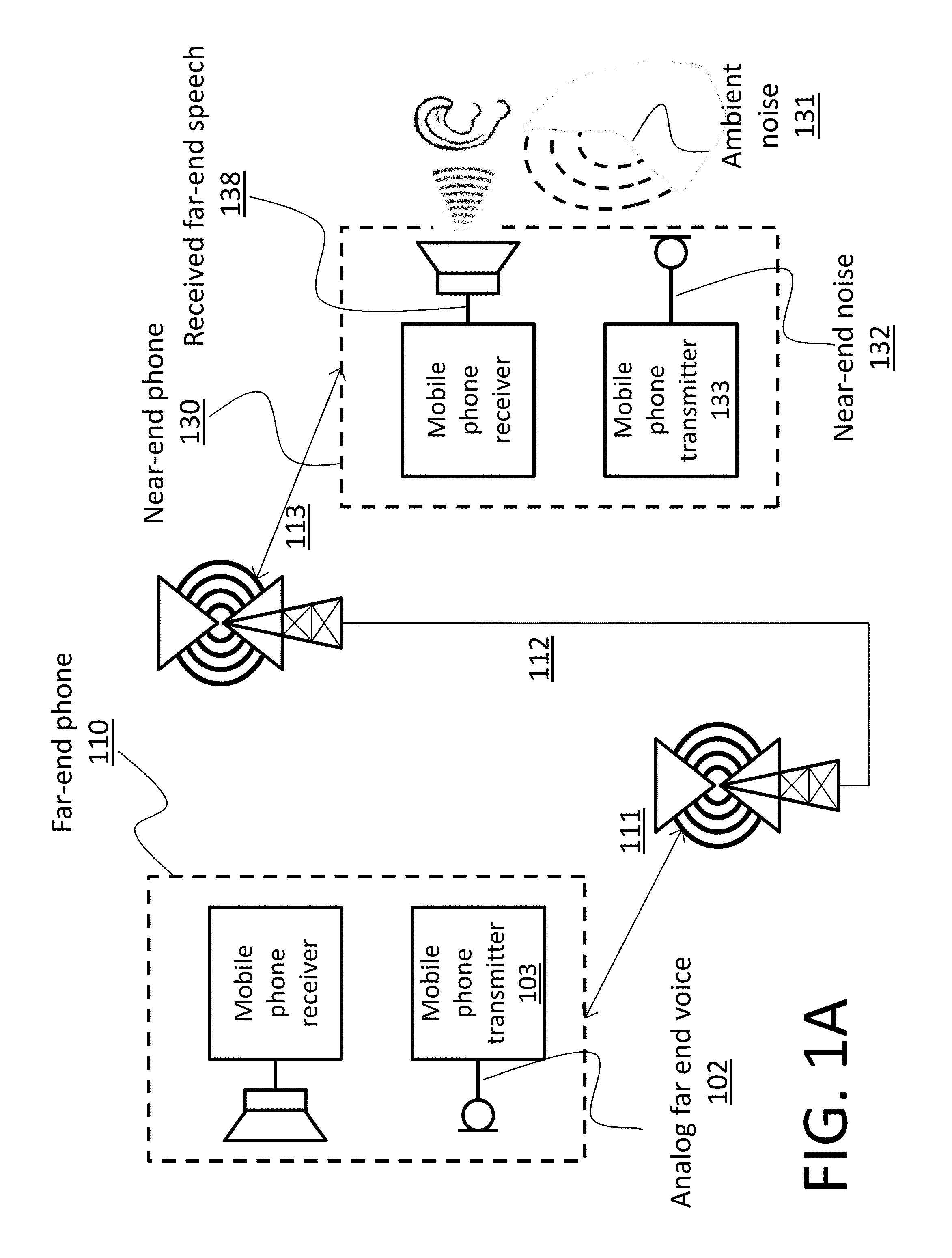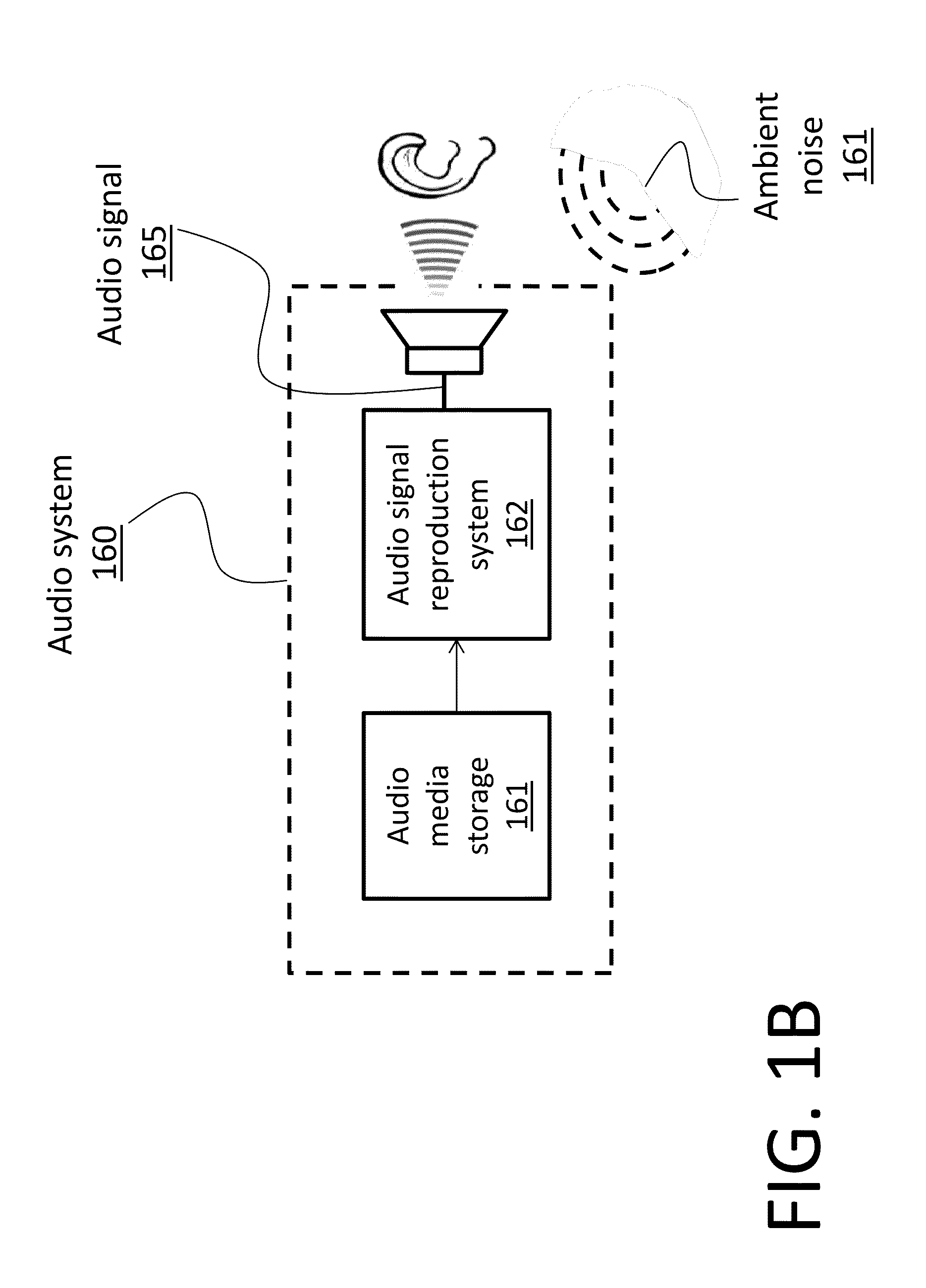Method for adaptive audio signal shaping for improved playback in a noisy environment
a technology of audio signal and noise, applied in the field of audio signal processing, can solve the problems of unquestionably deteriorating perceived quality or experience (qoe), mobile phone users suffering from a typical problem, and achieve the effects of improving a user's qoe, preserving the intelligibility of certain low level signals, and low delay
- Summary
- Abstract
- Description
- Claims
- Application Information
AI Technical Summary
Benefits of technology
Problems solved by technology
Method used
Image
Examples
Embodiment Construction
[0029]The present invention may be described herein in terms of functional block components and various processing steps. It should be appreciated that such functional blocks may be realized by any number of hardware components or software elements configured to perform the specified functions. For example, the present invention may employ various integrated circuit components, e.g., memory elements, digital signal processing elements, logic elements, look-up tables, and the like, which may carry out a variety of functions under the control of one or more microprocessors or other control devices. In addition, those skilled in the art will appreciate that the present invention may be practiced in conjunction with any number of data and voice transmission protocols, and that the system described herein is merely one exemplary application for the invention.
[0030]It should be appreciated that the particular implementations shown and described herein are illustrative of the invention and...
PUM
 Login to View More
Login to View More Abstract
Description
Claims
Application Information
 Login to View More
Login to View More - R&D
- Intellectual Property
- Life Sciences
- Materials
- Tech Scout
- Unparalleled Data Quality
- Higher Quality Content
- 60% Fewer Hallucinations
Browse by: Latest US Patents, China's latest patents, Technical Efficacy Thesaurus, Application Domain, Technology Topic, Popular Technical Reports.
© 2025 PatSnap. All rights reserved.Legal|Privacy policy|Modern Slavery Act Transparency Statement|Sitemap|About US| Contact US: help@patsnap.com



